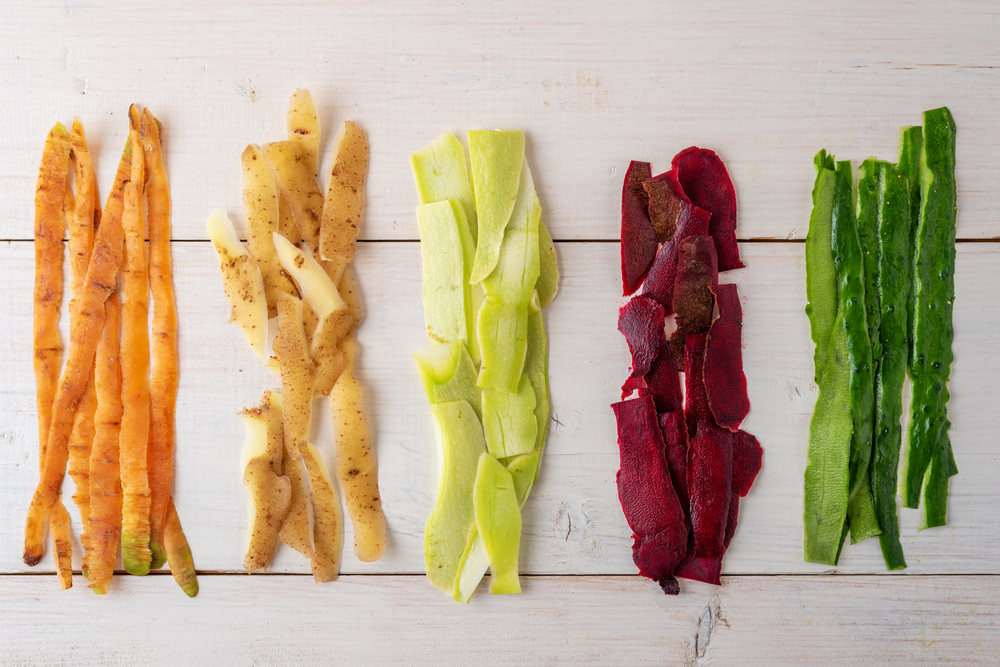If you’re a lazy cook, this will probably come as good news: Not only do you not have to peel most fruits and vegetables before you cook or eat them, you shouldn’t peel most of them.
Several studies over the years have found that the peels of fruits and vegetables contain lots of nutrients.
“Peelings are excellent, excellent sources of many vitamins and minerals, specifically vitamin C, vitamin K, and the B vitamins,” says Amy Bragagnini, board-certified oncology nutrition specialist and spokesperson for the Academy of Nutrition and Dietetics.
Plant Nutrients Keep You Healthy
Collectively, the nutrients found in plants are called phytochemicals, according to Debbie Fetter, a researcher and assistant professor of nutrition at the University of California Davis.
You’ve probably heard of some of them: beta-carotene, flavonoids, isoflavones, polyphenols — the list is long. Phytochemicals are part of the immune system of the plant you’re eating, and they help the plant stay healthy by protecting it from viruses, bacteria, and fungi.
When you eat the plant, these phytochemicals help keep you healthy, too. Many of them have antioxidant and anti-inflammatory effects and may be protective against a host of ills, from cardiovascular disease to cancer to obesity and diabetes. Some might even temper the effects of aging, such as cognitive decline and motor deficits.
Fiber and the Microbes It Feeds
The nutrients found in peelings also help increase the diversity of your gut microbiome, which science has discovered plays a key role in overall health. These nutrients also contribute to health by feeding the good bacteria so they can outcompete the harmful ones, explains Fetter.
Fiber is another essential reason to eat those peelings. Most people don’t get enough, says Fetter. And that’s a problem. Fiber does a lot more than keep you regular (though that is very important). Water-soluble fiber has a gel-like effect that captures some of the cholesterol from our diets and traps it in our stools.
The cholesterol is then passed from the body in the stool and doesn’t end up in the bloodstream, where it can increase your risk of heart attack and stroke. Fiber also makes you feel full, so you’re less likely to overeat, which reduces your risk of obesity. In addition, fiber in the diet slows down the absorption of carbohydrates, helping to prevent spikes in blood sugar that can lead to diabetes.
Here’s a warning about fiber, though: If you haven’t been eating a lot of fiber, don’t start eating six salads a day, says Bragagnini. Your digestive system will not be happy.
“I always encourage people to slowly increase fiber intake versus doing it all at once,” she says. Give your body time to get used to the new menu. Don’t worry; if you go slowly, eventually, your body will come to love its new high-fiber diet.
Read More: It Doesn’t Take Long to Reset Your Gut Health With Small Lifestyle Changes
But What About Pesticides?
Some people peel fruits and vegetables to get rid of pesticide residue. That’s not necessary, says Bragagnini.
A thorough washing in plain water and scrubbing with a vegetable brush when needed is plenty. In any case, she says, the benefits of eating the peels outweigh any risk from pesticide residue.
You can find out more about how to eat healthfully, and in the bargain, get some ideas for delicious ways to add healthful nutrients to your diet by checking out EatRight.org. And remember, don’t peel those fruits and veggies. There are lots of good nutrients in there.
Read More: Things to Know Before Spraying Pesticides On Your Garden
Article Sources
Our writers at Discovermagazine.com use peer-reviewed studies and high-quality sources for our articles, and our editors review for scientific accuracy and editorial standards. Review the sources used below for this article:
Avery Hurt is a freelance science journalist. In addition to writing for Discover, she writes regularly for a variety of outlets, both print and online, including National Geographic, Science News Explores, Medscape, and WebMD. She’s the author of “Bullet With Your Name on It: What You Will Probably Die From and What You Can Do About It,” Clerisy Press 2007, as well as several books for young readers. Avery got her start in journalism while attending university, writing for the school newspaper and editing the student non-fiction magazine. Though she writes about all areas of science, she is particularly interested in neuroscience, the science of consciousness, and AI–interests she developed while earning a degree in philosophy.














